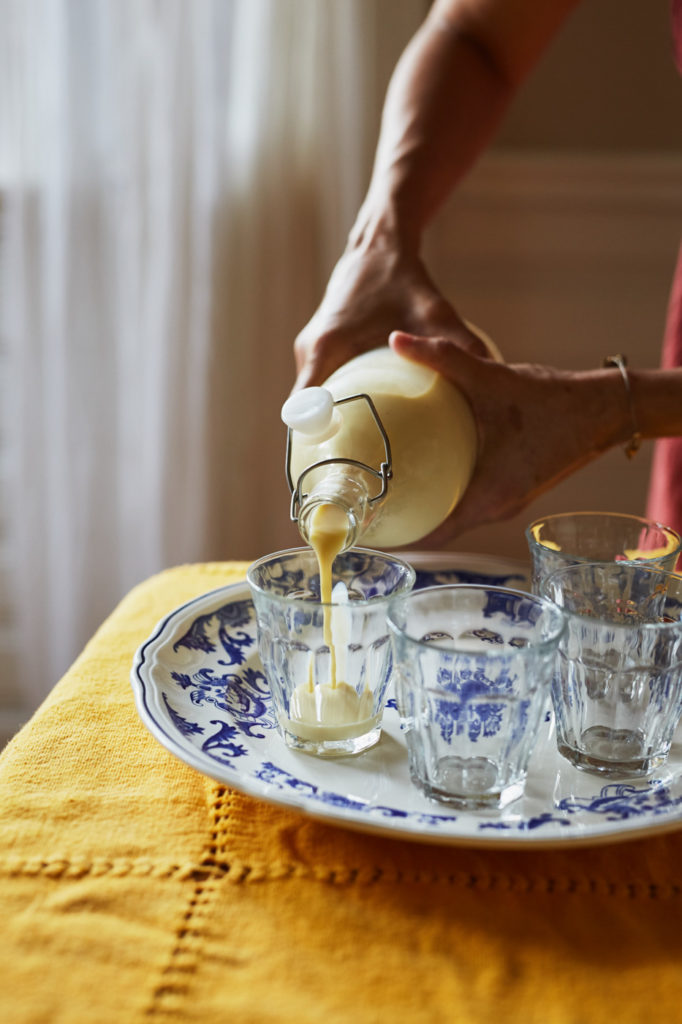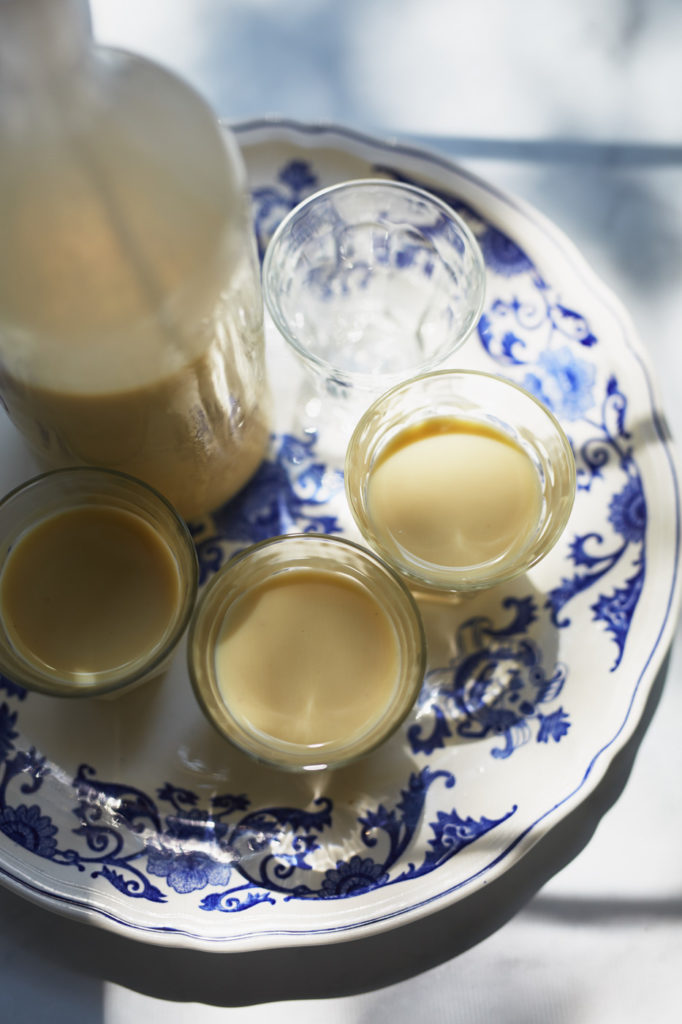During the colonial period (1521-1821) of New Spain—the term used to refer to modern-day Mexico—convents were powerhouses that occupied whole city blocks. Their gardens were lush, their kitchens like laboratories equipped with balances, graters, pots, pans, metates, and comales. They were stocked with the finest local ingredients, as well as those entering the country from the Manila Galleons, which sailed annually across the Pacific Ocean between Manila in the Philippines (then a Spanish colony) and the port of Acapulco, connecting Mexico to Asia. It was the world’s first global trade route and the means of a rich cultural exchange that would forever change the culture and cooking of Mexico, not to mention Europe and Asia.
The church and the viceroy had first claim on everything coming into the country, a privilege that benefitted convent kitchens immensely. Native to Asia, lime and tamarind brought a sourness linked to modern Mexican food; spices like cinnamon, pepper, and cloves met chocolate and chiles to form the perfect marriage in mole, the creative sauce invented in seventeenth century convent kitchens. The combination of sweet and sour flavors characteristic of Asian cuisines became part of the Mexican diet. Sugarcane introduced a type of sweetness unlike that of honey, which led to the creation of unique desserts. To many, Mexican sweets may be less familiar than the country’s better-known savory dishes, but confectionary became common practice in the convents of the viceroy.
During the viceregal period, Mexico’s population was multicultural and multi-ethnic with indigenous populations, Spaniards, Asians, Africans, and every racial mixture in between. In order to be admitted into these early New World orders, young women had to be of Spanish or Creole (Mexican born with Spanish blood) descent and come with a dowry, a symbol of the family’s piety. Being admitted to a convent was considered a badge of honor among New Spain’s elite.
The first convent in Mexico, Nuestra Señora de Concepción, had been established by 1540. Between 1550 and 1811, sixty convents were founded. As more Spanish families settled in the New World, convents became a type of boarding school for upper class young women who brought mixed race servant girls with them. In addition to teaching religious doctrine, reading and writing, some convents offered classes in sewing, embroidering and painting. But cooking was the real stand out. Convents became places where unique flavors and culinary traditions quietly merged; their kitchens were the first area where women would make a mark on high cuisine.
European cooking was the primary influence on early convent confections and nuns found inspiration in cookbooks such as Los Cuarto Libros del Arte de la Confitería (The Four Books on the Art of Confectionary) by Miguel de Baeza (1592), and Francisco Martinez Montiño’s Arte de Cocina, Pastelería, Vizcochería y Conservería (Art of Cooking, Pastry, Savory Pastry and Preserves) of 1611, both published in Spain.
For centuries, sugar had been a rare and costly commodity in Europe, valued mainly for its supposed medicinal qualities. But during the Middle Ages, the Moors introduced sugarcane and Islamic confectionary to Andalucia, Spain, and Spanish nuns developed a sweet tooth. Fruits used in candies and conserves, as well as nuts in the form of brittles and marzipans were derived from Islamic practices. Custards made with egg yolks beaten with sugar likely developed in the late fifteenth and early sixteenth centuries. According to anthropologist Sidney Mintz, “The process of making them [custards] was seen as analogous to the progress of raw, unrefined novices to full members of the spiritual community.”
The sweet grass was brought to New Spain in the early sixteenth century and first planted by conqueror Hernán Cortés in his estates in Veracruz and Puebla. Its cultivation quickly spread to Guerrero, Morelos, and the Valley of Mexico. Entering the New World alongside sugar were peaches, apples, figs, grapes, plums, quinces, bananas and oranges. All flourished, making early Andalusian nuns eager to combine their dessert-making traditions with native ingredients like vanilla and chocolate.
The resulting sweets that developed in cities like Puebla, Morelia, Queretaro, and Jalapa include custards, candied fruits, sweet potato marzipan or camote, and a caramelized milk called cajeta which further reduced into a fudge called jamoncillo (little ham). The baroque names of some of the desserts could not be more appropriate given the context in which they were made, and by whom—bocados de cielo (bites of sky), suspiros de monja (nun’s sighs), besos de monja (nun’s kisses), lagrimas de obispo (bishop’s tears), huevos espirituales (spiritual eggs), and aleluyas (hallelujas). Many of the young nuns making confectionary were hungry for self-expression. Their “sighs” and “kisses” a psychological bridge to the exterior world and a metaphor for spiritual life.
Each convent had its specialty. Nuns of the Concepción order were known for their empanadas, the ones from San Bernardo for their cookies and conserves, sisters of San Lorenzo made creamy caramels, the capuchin nuns of Nuestra Señora de Guadalupe made the best chocolate in Mexico City. The sisters of Puebla, whose Santa Rosa Convent was the most famous, were responsible for the finest marzipans in the country in addition to stellar candied fruits and the boozy eggnog known as rompope. Confections were offered as gifts, served at festivities, or sold to the public to supplement the convent’s income.




Many early recipes can be found in kitchen manuscripts of the seventeenth and eighteenth centuries. One of the earliest in existence is attributed to Sor Juana Ines de la Cruz, an accomplished scholar, philosopher and poet whose work was published and widely read in Spain. The manuscript is undated but she lived and worked in Mexico City’s Convent of San Jerónimo between 1669 and her untimely death in 1695. A reluctant cook, she eventually found intellectual comfort in the kitchen and once declared, “If Aristotle had cooked, he would have written much more.” Sor Juana used poetry and philosophy to talk about the transformation of ingredients and philosophized about the sensory pleasures of food. Of the thirty-six recipes attributed to her, most are for the confections of the day, highlight the Moorish and Spanish influence, and reflect the cultural mixing in early Mexican cuisine. She is said to have loved chocolate.
Confectionery production ceased to be a domain exclusive to convents in the nineteenth century. Although nuns rarely, if ever, ventured beyond their convent walls, their sweets traversed miles and time, straight into the modern era. Today, candy stores like Dulcería Celaya in Mexico City and La Gran Fama in Puebla make sure viceregal flavors are alive and well in contemporary Mexico. Given the whimsical names of each candy, it’s not difficult to imagine a world of dreams, secrets, and wishes in each sweet bite.
RECIPE
Hallelujahs
Ingredients:
- 1 14-ounce can condensed milk
- ¼ cup whole milk
- ½ cup sugar
- ¼ teaspoon cinnamon
- 4 cups finely ground pecans, almonds or pine nuts
Method:
Put the condensed milk, whole milk, sugar and cinnamon in a saucepan over medium heat. Stir so it does not stick to the bottom of the pan.
When the mixture comes to a boil add the ground nuts. Stir constantly until it forms a mass and you can see the bottom of the pan.
Remove from heat and spread onto a sheet pan lined with parchment paper. When cool, top with another sheet of parchment and roll to a ¼-inch thick. Emboss with a pattern of choice and cut out 2-inch circles with a cookie cutter.
Makes about 2 dozen candies.
RECIPE
Rompope
Ingredients:
- 6 cups whole milk
- 2 cinnamon sticks
- 6 whole cloves
- 1 pinch nutmeg
- 1 teaspoon vanilla extract
- 1 ½ cups granulated sugar
- 8 large egg yolks
- 1 ¼ cup white rum
Method:
Bring milk, cinnamon, cloves, a pinch of nutmeg, and vanilla to a boil over medium-high heat in a large heavy-bottom saucepan. Reduce heat to medium-low and simmer for 15 minutes. Remove from heat and remove the cinnamon and cloves.
In a large bowl, whisk the egg yolks and sugar until thick and pale.
Whisking constantly, very slowly add about a cup of milk to the yolk mixture to temper the yolks.
Return the yolk mixture to pan and cook over low heat, constantly stirring and scraping the bottom and sides of the pan, until the mixture thickens enough to coat the back of a spoon, about 25 to 30 minutes. Set aside to cool completely.
When cool, stir in rum, and serve.
Serves 8 to 10.



Our comments section is for members only.
Join today to gain exclusive access.